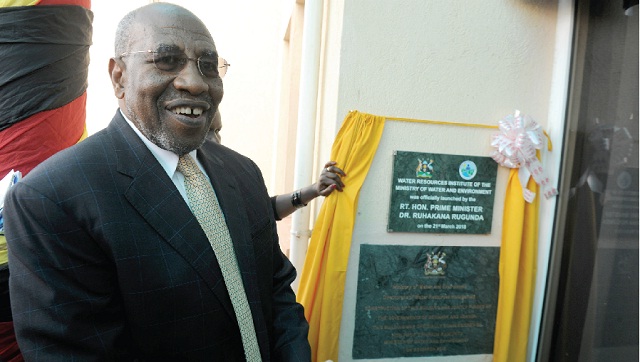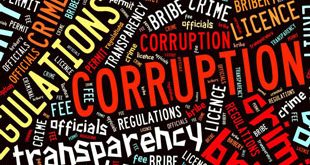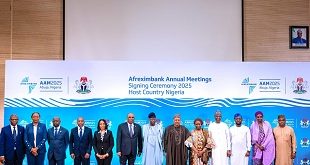
Directorate of Water Resources hosts first Water and Environment week
Entebbe, Uganda | JULIUS BUSINGE | For one week in mid-March, the grounds of the Directorate of Water Resources Management in Entebbe was a beehive of activity as ordinary people mingled with water professional and experts to mull over the state of Uganda’s water.
It was the first ever `Uganda Water and Environment Week’ designed to find answers to one fundamental question: How could Uganda best protect its water and environment resources which are dwindling?
Discussing water scarcity on the cool shores of Lake Victoria; one of biggest sources of fresh water in the world would have been totally odd to most attendees of the event.
Officials from the government, non-governmental organisations, academia, farmers, researchers, private sector and more took part in the event where over 100 key sector institutions showcased their work.
As they milled around the exhibition stands set up by top water and environment sector companies, organisations, and agencies in a sea of white tents on the directorate lawn on the cool edge of Lake Victoria, not many of the visitors might have imagined how urgent the problem is.
Joseph Oriono Eyatu, an engineer who is the commissioner for Rural Water Supply and Sanitation in the Directorate is one of the few professionals and experts who understand the gravity of the issue. He told The Independent that about 20 years ago, Uganda got 63billion cubic litres of renewable water – that is water injected into its flowing rivers and underground aquifers from rainfall. But because of poor handling and use of water and the environment, Eyatu says such renewable water has declined to around 43billion cubic litres. That is a 30% loss of all water in 20 years.
“Rapid population growth is putting pressure on the resource,” he said, and yet the government is making very little investment in the sector.”
Eyatu explained that the sector needs about Shs7 trillion annually to finance its activities but out of the Shs 29 trillion national budget for the 2017/18 financial year, the sector was allocated only Shs713 billion. Incidentally, this is slightly higher than the Shs632 billion allocated to it in FY2016/2017.
“The money we get is not adequate,” Eyatu said, ““Every year, we are adding 1300 water point sources but still we are not able to match the demands of the growing population.”
Eyatu explained that to compound the problem, even the little money often arrive late. To him this shows that although water and environment is an important sector in Uganda as it powers people’s lives, businesses, and the economy, it seems not to be among the top government priorities.
Eyatu says this funding gap has left the sector facing several challenges including encroachment on protected water areas, illegal destruction of forest cover, and corruption. The sector also cannot come up with innovations or hire adequate staff.
Eyatu said the Water and Environment Week was the Ministry of Water and Environment’s way of attempting to deal with these challenges. The event was intended to raise awareness on the best practices in protecting water and environment resources and expose innovations.
Experts are worried that limited financing of the sector might cause Uganda not to meet the United Nation’s Sustainable Development Goal Number Six (SDG6) on sustainable management of water resources and access to safe water and sanitation.
These are considered essential for supporting existing investments and unlocking economic growth and productivity.
“There is nothing you can do that affects growth without water,” Eyatu says. He named urbanisation, industrialisation, domestic water and sanitation, works and transport, education, health, and agriculture.
Water Institute launched
Prime Minister Ruhakana Rugunda who addressed participants at the event said the government’s National Development Plan II prioritises investment in many sectors that require good water and environment practices to yield tangible results. He named the National Irrigation Policy in agriculture, and other investments in oil and gas, and mineral exploitation.
Rugunda also launched the Water Resources Institute (WRI) which was one of the major highlights of the six- day event.
The WRI is an addition to the sections of the directorate. It is part of reforms aimed at promoting research and innovation to deal with negative repercussions of pollution, climate variability, and dwindling water supply. Rugunda described the institute as an ‘important milestone’ and pledged the government’s support for it.
The long term plan is for WRI to derive resources by offering consultancy services, accessing long term public funds from government, fees and levies and setting up a research fund.
But Ministry of Water and Environment officials said that in the short to medium term, the WRI will be funded through available resources under the ministry, partnerships with academic institutions and other relevant agencies, and support from development partners.
The Institute’s current financial requirements in the short term (2-3 years) are Shs16.3 billion, for the medium term (4 -7 years), it will be Shs 18.4 billion while in the long term (7-10 years) Shs26.2 billion will be needed.
 The Independent Uganda: You get the Truth we Pay the Price
The Independent Uganda: You get the Truth we Pay the Price


